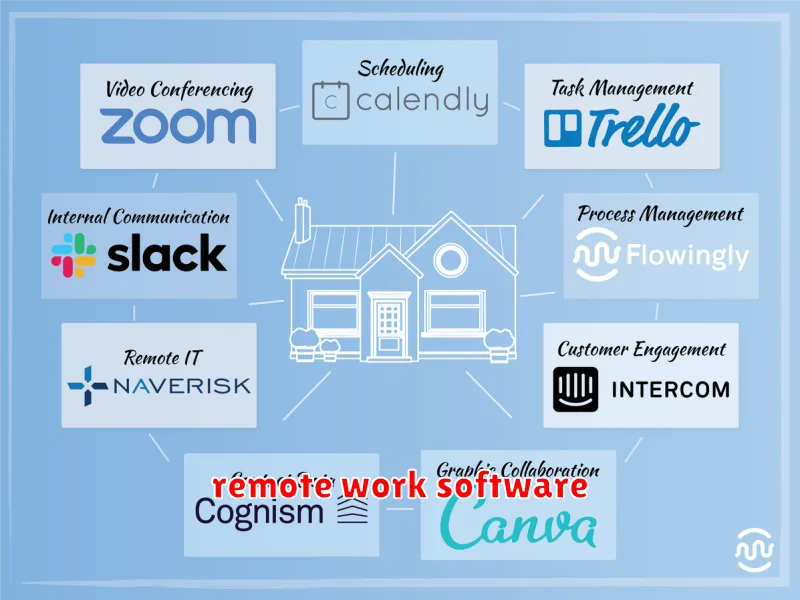Are you looking for the best software for remote work in 2024? If so, you’ve come to the right place. In this comprehensive guide, we’ll cover all the essential tools you need to stay connected, productive, and organized while working remotely. From communication and collaboration platforms to project management tools and productivity apps, we’ll explore the top options available in the market. Whether you’re a freelancer, a small business owner, or a large enterprise, we’ve got you covered.
The world of work is rapidly evolving, and remote work is becoming increasingly popular. This shift presents both opportunities and challenges. Finding the right software can make all the difference in streamlining your workflow, improving communication, and boosting overall productivity. We’ll provide insights into the features, pros, and cons of each tool, helping you make informed decisions to optimize your remote work experience.
Slack
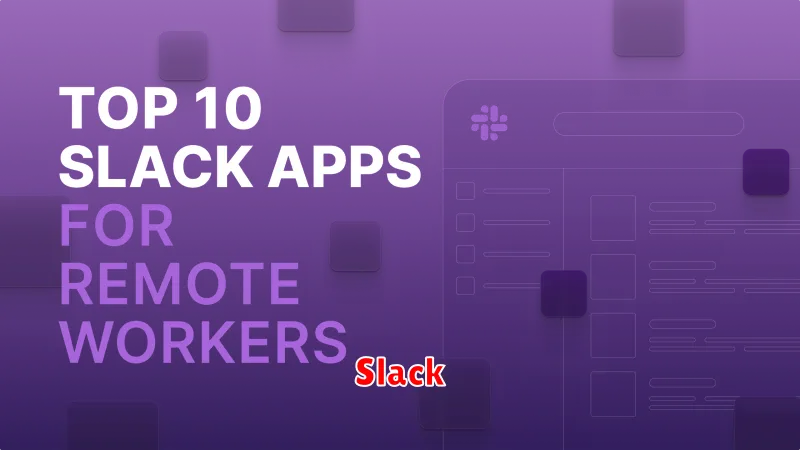
Slack is a popular team communication platform that allows remote teams to communicate and collaborate effectively. It offers a variety of features, including:
- Instant messaging: Enables quick and easy communication between team members.
- Channels: Organize conversations into specific topics or projects.
- File sharing: Easily share documents, images, and other files with team members.
- Integrations: Connect with other popular apps and services.
- Video and voice calling: Conduct meetings and collaborate in real-time.
Slack is a great tool for remote teams that need to stay connected and productive. It is easy to use and offers a wide range of features that can help improve team communication and collaboration.
Zoom

Zoom is a powerful video conferencing tool that has become a staple for remote work and communication. It offers a comprehensive suite of features for meetings, webinars, and team collaboration. With its user-friendly interface, reliable performance, and affordability, Zoom remains a top choice for businesses and individuals alike.
Key Features of Zoom:
- High-quality video and audio: Zoom delivers crystal-clear video and audio, ensuring smooth communication even with multiple participants.
- Screen sharing: Share presentations, documents, and applications seamlessly during meetings.
- Virtual backgrounds: Blur your background or replace it with a custom image for a professional look.
- Breakout rooms: Create separate breakout rooms for smaller group discussions and brainstorming sessions.
- Cloud recording: Record meetings for later reference or playback.
- Chat and file sharing: Communicate with participants through instant messaging and share files directly within the platform.
- Integration with other tools: Zoom integrates with popular business applications like Slack, Google Calendar, and Microsoft Outlook.
Benefits of Using Zoom for Remote Work:
- Enhanced communication: Zoom facilitates real-time interaction, fostering stronger connections and collaboration among team members.
- Increased productivity: With its user-friendly interface and robust features, Zoom streamlines meetings and improves overall productivity.
- Improved work-life balance: By enabling remote work and virtual collaboration, Zoom empowers individuals to achieve a better work-life balance.
- Cost-effective solution: Zoom offers affordable plans, making it a budget-friendly option for businesses of all sizes.
In conclusion, Zoom is a leading video conferencing platform that has revolutionized remote work. Its comprehensive features, user-friendliness, and affordability make it an essential tool for businesses and individuals looking to enhance communication, collaboration, and productivity in the digital age.
Google Workspace

Google Workspace is a suite of cloud-based productivity tools that can be a valuable asset for remote work in 2024. Offering a comprehensive set of applications like Gmail, Google Docs, Sheets, Slides, Calendar, Drive, and Meet, it seamlessly integrates communication, collaboration, and file sharing for distributed teams.
Collaboration and Communication: Google Workspace facilitates real-time collaboration on documents, spreadsheets, and presentations. Team members can work simultaneously, leave comments, and track changes, streamlining project workflow. The built-in video conferencing feature in Google Meet enables virtual meetings, screen sharing, and seamless communication.
Cloud-Based Storage and Accessibility: With Google Drive, remote workers have access to their files from anywhere with an internet connection. The platform provides ample storage space and robust file sharing capabilities, making it easy to share documents with colleagues, clients, or partners.
Accessibility and Device Compatibility: Google Workspace is accessible on any device with a web browser, including computers, tablets, and smartphones. This flexibility allows remote workers to stay productive regardless of their location or preferred device.
Integration and Automation: Google Workspace integrates with other popular business applications, including CRM, project management, and accounting tools. The platform also offers automation capabilities, such as automated meeting scheduling and email responses, saving time and improving efficiency.
Scalability and Affordability: Google Workspace offers different subscription plans to cater to the needs of businesses of various sizes. Its subscription-based pricing structure makes it an affordable and scalable solution for remote teams, allowing them to pay only for the features they need.
Microsoft Teams
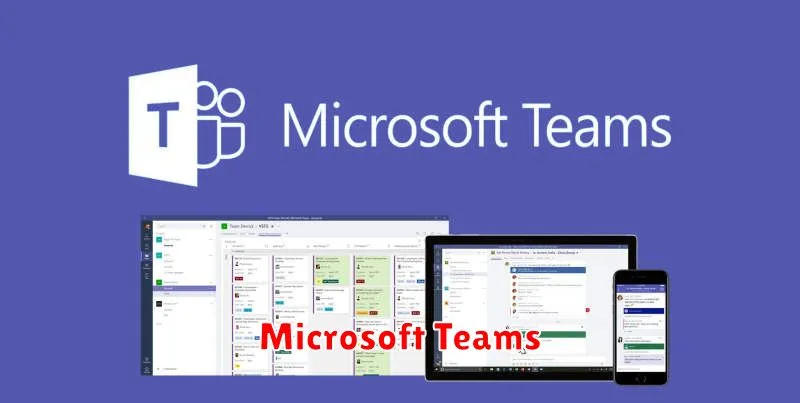
Microsoft Teams is a powerful and versatile platform that has become a go-to solution for businesses of all sizes looking to streamline communication and collaboration in a remote work environment. With its comprehensive suite of features, including instant messaging, video conferencing, file sharing, and task management, Teams empowers remote teams to stay connected, productive, and aligned.
Key features of Microsoft Teams that make it ideal for remote work:
- Real-time communication: Instant messaging and video conferencing allow for quick and easy communication, reducing the need for lengthy email chains.
- Collaboration tools: Shared workspaces, document co-authoring, and task management features enable teams to work seamlessly on projects together.
- Integration with other Microsoft products: Teams integrates seamlessly with other popular Microsoft applications like Office 365, Outlook, and OneDrive, simplifying workflows and eliminating the need to switch between multiple platforms.
- Secure and reliable: Microsoft Teams offers enterprise-grade security features to protect sensitive information and ensure business continuity.
- Scalability: Teams can easily accommodate teams of all sizes, from small startups to large corporations.
Microsoft Teams has emerged as a robust and reliable platform for remote work, empowering teams to stay connected, collaborate effectively, and achieve shared goals. With its comprehensive feature set and seamless integration with other Microsoft products, Teams provides a comprehensive solution for modern remote work needs.
Asana
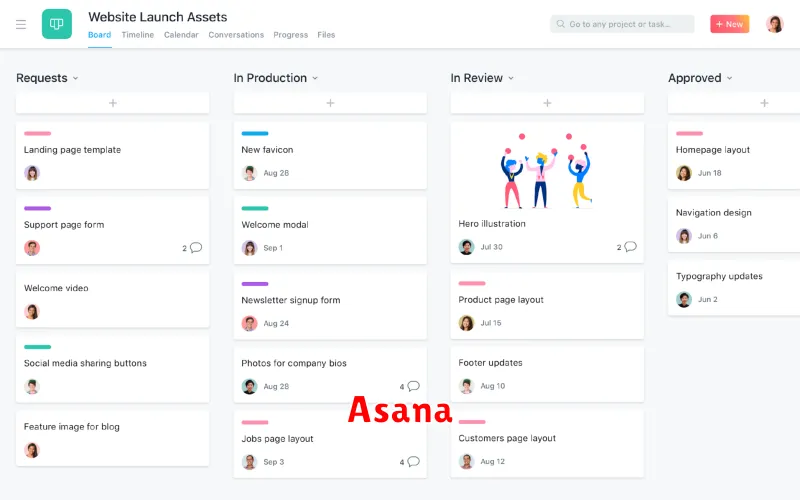
Asana is a powerful project management tool designed to enhance collaboration and organization, especially for remote teams. Its intuitive interface and versatile features make it an excellent choice for managing tasks, projects, and workflows.
Key Features:
- Task Management: Create, assign, and track tasks with clear deadlines and dependencies.
- Project Management: Organize projects into boards, lists, or timelines to visualize progress and manage dependencies.
- Collaboration: Enable seamless communication with team members through comments, @mentions, and file sharing.
- Workflow Automation: Automate repetitive tasks and streamline processes using rules and integrations.
- Reporting & Analytics: Gain insights into team performance and project progress with customizable reports.
Benefits for Remote Teams:
- Centralized Workspace: Provides a single platform for all projects and communication, reducing confusion and improving transparency.
- Improved Communication: Facilitates clear communication and task delegation, ensuring everyone is on the same page.
- Enhanced Productivity: Streamlines workflows, reduces distractions, and helps teams stay focused on priorities.
- Increased Accountability: Assigns clear responsibilities and tracks progress, promoting accountability and efficiency.
Overall: Asana is a robust and user-friendly project management solution that empowers remote teams to collaborate effectively and achieve their goals. Its comprehensive features, intuitive interface, and powerful automation capabilities make it a top choice for remote work in 2024.
Notion
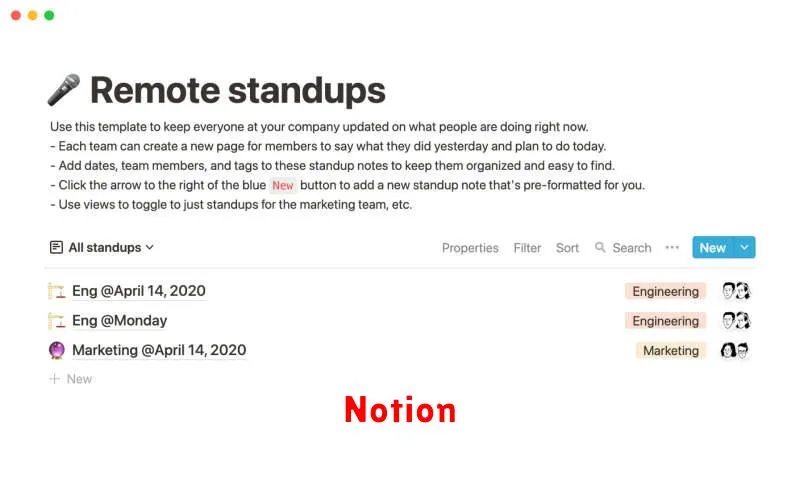
Notion is a versatile tool that serves as a central hub for your remote work needs. It can act as a note-taking app, a project management tool, a knowledge base, and even a wiki.
One of the most attractive features of Notion is its flexibility. You can customize your workspace with various templates, databases, and views to organize your thoughts, tasks, and projects in a way that suits your workflow.
Notion also facilitates effective collaboration. You can share your workspaces with team members, allowing for real-time editing, commenting, and task assignment. This streamlines communication and ensures everyone is on the same page.
Furthermore, Notion offers robust integration capabilities, connecting with various tools like Slack, Google Drive, and Zapier, expanding its functionality and allowing for a more seamless work experience.
With its user-friendly interface and a wealth of features, Notion is a powerful tool for remote teams seeking an all-in-one solution to manage their workflow and collaborate effectively.
Dropbox
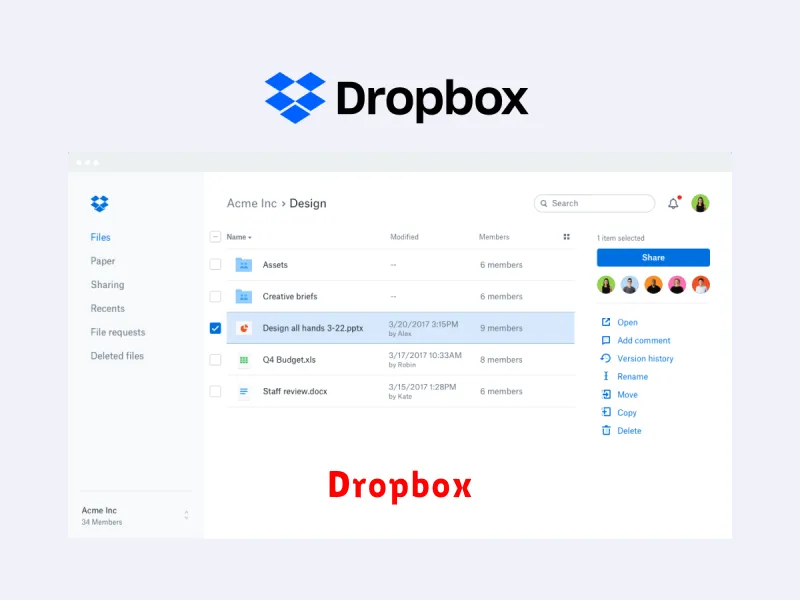
Dropbox is a cloud storage and file-sharing service that can be a valuable tool for remote work teams. It allows you to store and access your files from anywhere, making it easy to collaborate with colleagues on projects. With Dropbox, you can share files with others, even if they don’t have a Dropbox account.
Dropbox also offers features such as version history, which allows you to revert to previous versions of a file if needed, and file syncing, which ensures that all your devices have the latest version of a file.
Here are some of the ways Dropbox can benefit remote work teams:
- Centralized file storage: Dropbox provides a single location for all your team’s files, making it easy to find what you need.
- Collaboration: Dropbox makes it easy for team members to collaborate on files, even if they are in different locations.
- Version history: Dropbox keeps track of all changes made to files, so you can easily revert to previous versions if needed.
- File syncing: Dropbox ensures that all your devices have the latest version of a file, so you can work on projects from anywhere.
Dropbox is a powerful tool that can help remote work teams stay organized and productive. It’s a reliable and secure service that can be a valuable addition to your team’s remote work toolkit.
LastPass
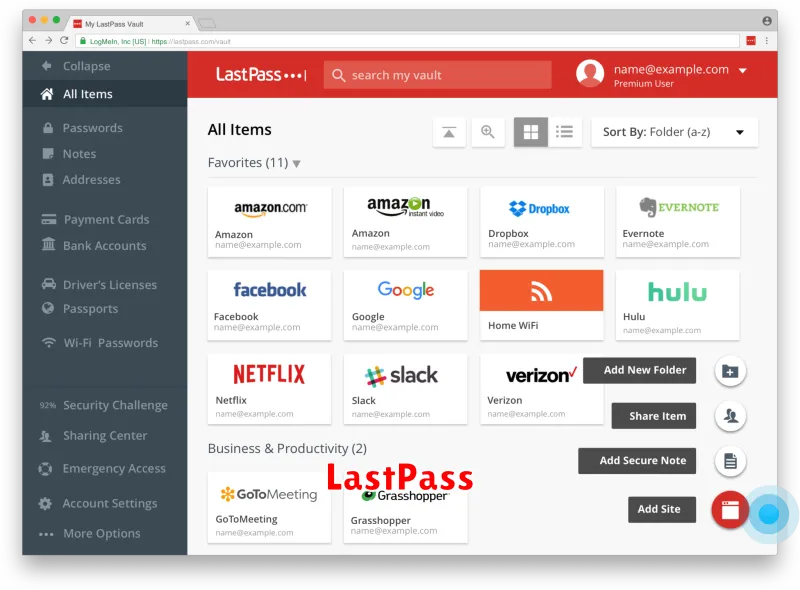
LastPass is a popular password manager that can be a valuable tool for remote workers. It securely stores all your passwords in an encrypted vault, accessible from any device.
With LastPass, you can:
- Generate strong and unique passwords for each of your online accounts.
- Autofill login credentials, saving you time and effort.
- Securely share passwords with colleagues or family members.
- Access your passwords from any device, including your computer, smartphone, or tablet.
LastPass also offers additional security features like two-factor authentication and emergency access, ensuring your passwords remain protected even if you lose your device.
NordVPN
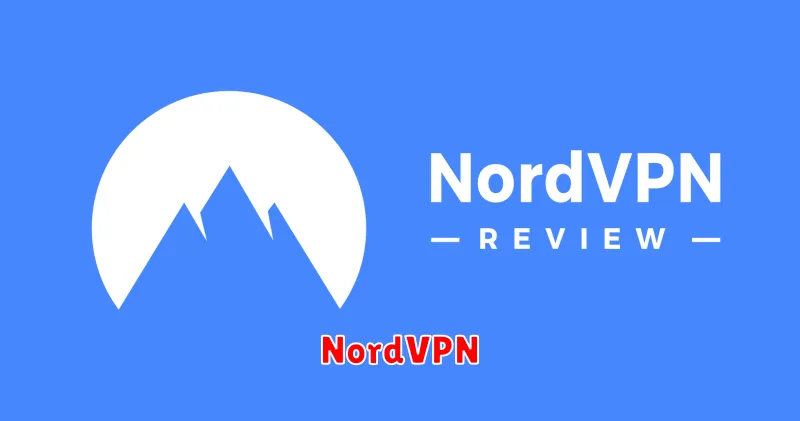
NordVPN is a leading virtual private network (VPN) provider that offers a comprehensive suite of features designed to enhance remote work productivity and security. With a global network of servers in over 60 countries, NordVPN allows remote workers to access geo-restricted content, bypass censorship, and protect their internet connection from cyber threats.
One of NordVPN’s key strengths is its unwavering commitment to user privacy. The company has a strict no-logs policy, meaning that it does not track or store any user activity data. This policy is further reinforced by NordVPN’s use of advanced encryption protocols, including AES-256, which ensures that all data transmitted through the VPN is secure.
NordVPN also offers a range of features specifically designed for remote workers. For example, the service’s NordLynx protocol provides lightning-fast speeds, making it ideal for video conferencing, file sharing, and other bandwidth-intensive tasks. The NordVPN CyberSec feature blocks malicious websites and ads, further protecting users from online threats.
Moreover, NordVPN allows users to connect up to six devices simultaneously, making it a versatile option for remote workers who use multiple devices. The service is also compatible with a wide range of platforms, including Windows, macOS, iOS, Android, and Linux.
In addition to its strong security and privacy features, NordVPN offers excellent customer support. The company has a dedicated 24/7 live chat service that is available to assist users with any technical issues or inquiries. With its robust feature set, commitment to user privacy, and reliable customer support, NordVPN is a top choice for remote workers seeking to enhance their productivity and security.
Calendly
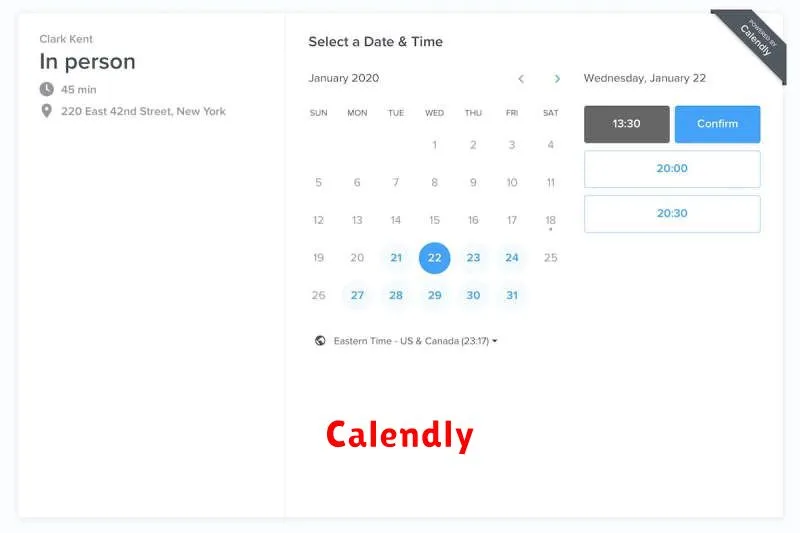
Calendly is a scheduling tool that automates the process of booking meetings, appointments, and other events. It integrates with popular calendars, such as Google Calendar and Outlook, and allows users to share their availability with others. When someone requests a meeting, Calendly automatically checks the user’s calendar and suggests available times. This eliminates the back-and-forth email communication that is often required to schedule meetings.
Calendly is a valuable tool for remote work because it helps to streamline communication and improve efficiency. It allows remote teams to schedule meetings and appointments without the need to be in the same physical location. This is particularly helpful for teams that are distributed across different time zones.
Here are some of the benefits of using Calendly for remote work:
- Saves time: Calendly automates the scheduling process, saving you time that you can spend on other tasks.
- Reduces communication: Calendly eliminates the need for back-and-forth email communication, which can be time-consuming and frustrating.
- Improves efficiency: By scheduling meetings and appointments more efficiently, Calendly helps to improve productivity and efficiency.
- Easy to use: Calendly is easy to use and has a user-friendly interface.
- Affordable: Calendly offers a free plan as well as paid plans to meet the needs of different users and businesses.
If you are looking for a scheduling tool to help you manage your remote work, Calendly is a great option.

